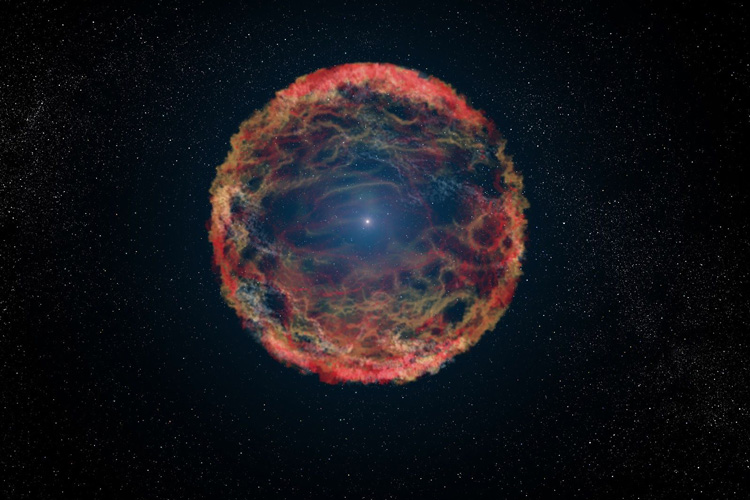-
Puzzling new supernova may be from star producing antimatter
November 14, 2017
An exploding star that continued to shine for nearly two years — unlike most supernovae, which fade after a few weeks — is puzzling astronomers and leading theorists, including UC Berkeley astrophysicist Daniel Kasen, to suggest that the event may be an example of a star so hot that it produces antimatter in its core. Stars would have to be very massive to get this hot, Kasen said, which is why most astronomers assumed they existed, if at all, only in the early years of the universe.
Tags:More -
Distant Supernova Split Four Ways by Gravitational Lens
March 6, 2015
From release by Robert Sanders: "Over the past several decades, astronomers have come to realize that the sky is filled with magnifying glasses that allow the study of very distant and faint objects barely visible with even the largest telescopes. A University of California, Berkeley, astronomer has now found that one of these lenses – a massive galaxy within a cluster of galaxies that are gravitationally bending and magnifying light – has created four separate images of a distant supernova. The so-called “Einstein cross” will allow a unique study of a distant supernova and the distribution of dark matter in…
Tags:More -
Closest, brightest supernova in decades is also a little weird
February 27, 2014
A supernova discovered by Alex Filippenko and his research team is causing scientists to ask new questions about exploding stars and how we currently understand the expanding universe. Full article found here.
More -
‘Supernova of a generation’ discovered by Berkeley scientists
August 25, 2011
"A supernova discovered yesterday is closer to Earth — approximately 21 million light-years away — than any other of its kind in a generation. Astronomers believe they caught the supernova within hours of its explosion, a rare feat made possible with a specialized survey telescope and state-of-the-art computational tools. The finding of such a supernova so early and so close has energized the astronomical community as they are scrambling to observe it with as many telescopes as possible, including the Hubble Space Telescope. Joshua Bloom, assistant professor of astronomy at the University of California, Berkeley, called it “the supernova of…
More



